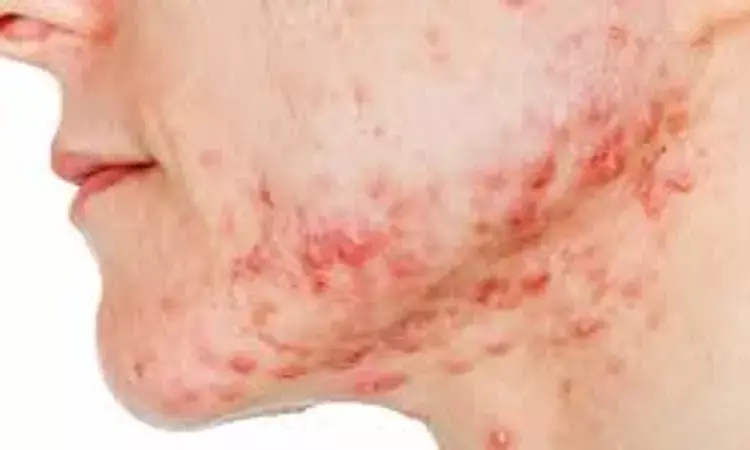- Home
- Medical news & Guidelines
- Anesthesiology
- Cardiology and CTVS
- Critical Care
- Dentistry
- Dermatology
- Diabetes and Endocrinology
- ENT
- Gastroenterology
- Medicine
- Nephrology
- Neurology
- Obstretics-Gynaecology
- Oncology
- Ophthalmology
- Orthopaedics
- Pediatrics-Neonatology
- Psychiatry
- Pulmonology
- Radiology
- Surgery
- Urology
- Laboratory Medicine
- Diet
- Nursing
- Paramedical
- Physiotherapy
- Health news
- Fact Check
- Bone Health Fact Check
- Brain Health Fact Check
- Cancer Related Fact Check
- Child Care Fact Check
- Dental and oral health fact check
- Diabetes and metabolic health fact check
- Diet and Nutrition Fact Check
- Eye and ENT Care Fact Check
- Fitness fact check
- Gut health fact check
- Heart health fact check
- Kidney health fact check
- Medical education fact check
- Men's health fact check
- Respiratory fact check
- Skin and hair care fact check
- Vaccine and Immunization fact check
- Women's health fact check
- AYUSH
- State News
- Andaman and Nicobar Islands
- Andhra Pradesh
- Arunachal Pradesh
- Assam
- Bihar
- Chandigarh
- Chattisgarh
- Dadra and Nagar Haveli
- Daman and Diu
- Delhi
- Goa
- Gujarat
- Haryana
- Himachal Pradesh
- Jammu & Kashmir
- Jharkhand
- Karnataka
- Kerala
- Ladakh
- Lakshadweep
- Madhya Pradesh
- Maharashtra
- Manipur
- Meghalaya
- Mizoram
- Nagaland
- Odisha
- Puducherry
- Punjab
- Rajasthan
- Sikkim
- Tamil Nadu
- Telangana
- Tripura
- Uttar Pradesh
- Uttrakhand
- West Bengal
- Medical Education
- Industry
Daylight PDT as effective as conventional redlight PDT for acne vulgaris: Study

Daylight Photodynamic therapy was at least as effective as conventional redlight Photodynamic therapy for acne vulgaris, according to a recent study published in the journal of Cosmetic Dermatology.
Acne vulgaris is a common chronic skin disease involving blockage and/or inflammation of pilosebaceous units (hair follicles and their accompanying sebaceous gland). Acne can present as noninflammatory lesions, inflammatory lesions, or a mixture of both, affecting mostly the face but also the back and chest. Treatment, based on severity, can involve a variety of topical and systemic agents directed at reducing sebum production, comedone formation, inflammation, and bacterial counts and at normalizing keratinization. Also, Photodynamic therapy (PDT) is considered an effective treatment for acne vulgaris. A significant drawback is pain during illumination. Daylight PDT (DL-PDT) is more tolerable.
A group of researchers conducted a study to assess and compare the efficacy and tolerability of DL-PDT and C-PDT for acne vulgaris through a prospective split-face trial.
Fifteen patients underwent 4 treatment sessions at 3-week intervals. First, 5-aminolevulinic acid (ALA) was applied to the entire face, after which the face was divided into 2 symmetrical areas: The right side was exposed to sunlight, and the left half was illuminated with red light. Photographs were obtained and evaluated by two dermatologists blinded to the study protocol. The patients reported side effects and downtime.
The Results of the study are:
There was a statistically significant decrease in the number and percent change of inflammatory and non-inflammatory lesions on both sides. Adverse effects were markedly decreased on the DL-PDT side compared to the C-PDT side (p < .01). The average downtime duration was longer for the C-PDT side (p < .001).
Thus, the researchers concluded that DL-PDT was at least as effective as C-PDT with fewer adverse effects and a shorter downtime duration.
Reference:
A split-face clinical trial of conventional red-light photodynamic therapy versus daylight photodynamic therapy for acne vulgaris by Evgenia Slutsky-Bank et al. published in the Clinical Trial.
https://pubmed.ncbi.nlm.nih.gov/34333844/
Dr. Shravani Dali has completed her BDS from Pravara institute of medical sciences, loni. Following which she extensively worked in the healthcare sector for 2+ years. She has been actively involved in writing blogs in field of health and wellness. Currently she is pursuing her Masters of public health-health administration from Tata institute of social sciences. She can be contacted at editorial@medicaldialogues.in.
Dr Kamal Kant Kohli-MBBS, DTCD- a chest specialist with more than 30 years of practice and a flair for writing clinical articles, Dr Kamal Kant Kohli joined Medical Dialogues as a Chief Editor of Medical News. Besides writing articles, as an editor, he proofreads and verifies all the medical content published on Medical Dialogues including those coming from journals, studies,medical conferences,guidelines etc. Email: drkohli@medicaldialogues.in. Contact no. 011-43720751


